Topic / Disruption / In-depth
Disruption & The Great Transformation

During the 2020s, key technologies are converging that will disrupt and transform the fabric of our civilization
These are phase change disruptions across the foundational sectors of the economy: information, food, transportation, energy, materials, labor and others.

What is disruption?
Disruptions occur when new ideas, products or services weaken or transform existing industries
Disruptions happen when several technologies, each one improving at a different rate, converge at the same point in time.
This makes it possible for new products to develop that outperform existing products and services.

Mainstream analysts fail to predict disruptions
RethinkX uses the Seba Technology Disruption Framework to accurately predict technology disruption.
Conventional analysts tend to examine risks and opportunities by extrapolating the present into the future in a straight line. As a result, they largely fail to anticipate the full impacts of societal and technological change.

What are the patterns of big change and transformation?
Equilibrium
We live in an equilibrium.
Though there has been innovation, our systems and processes have stayed more or less the same for about 100 years.
Technology cost curves
Although our systems are unchanged for the most part, technologies within our system are improving in costs and capability at different rates.
Artists, entrepreneurs and forecasters see possibility within these new technology spaces. They start companies, and develop products and services whose cost curves improve over time.
Technology convergence
At some point, these new technologies converge and allow the creation of a vast new possibility space.
For example, the convergence of 2.5G technology, touch screens, sensors, processing power and energy-dense lithium-ion batteries converged at just the right time for the first smartphone to be developed.
Those in the mainstream often fail to see this kind of disruption coming.
S-Curve market adoption
The adoption of the new technology is non linear and follows an S-curve.
In all technology disruptions, the pace appears slow at first because a new product has less than 1-2% market penetration. It then hits a tipping point and accelerates until the product nears about 80% of the market. At this point, growth slows as the market reaches saturation.
Rupture point
The product or service hits a rupture point, disrupting the previous equilibrium.
At this point, change is almost inevitable as accelerators push the system to a new equilibrium.
Change or collapse
The rupture point sees a range of possible outcomes. Convergence leads to divergence. We either change or collapse.
Continuation of the current state has a probability of almost zero, while a new state governed by different rules has a high probability.
Old accelerators or breaks do not work anymore. The only solution is to embrace system transformation.
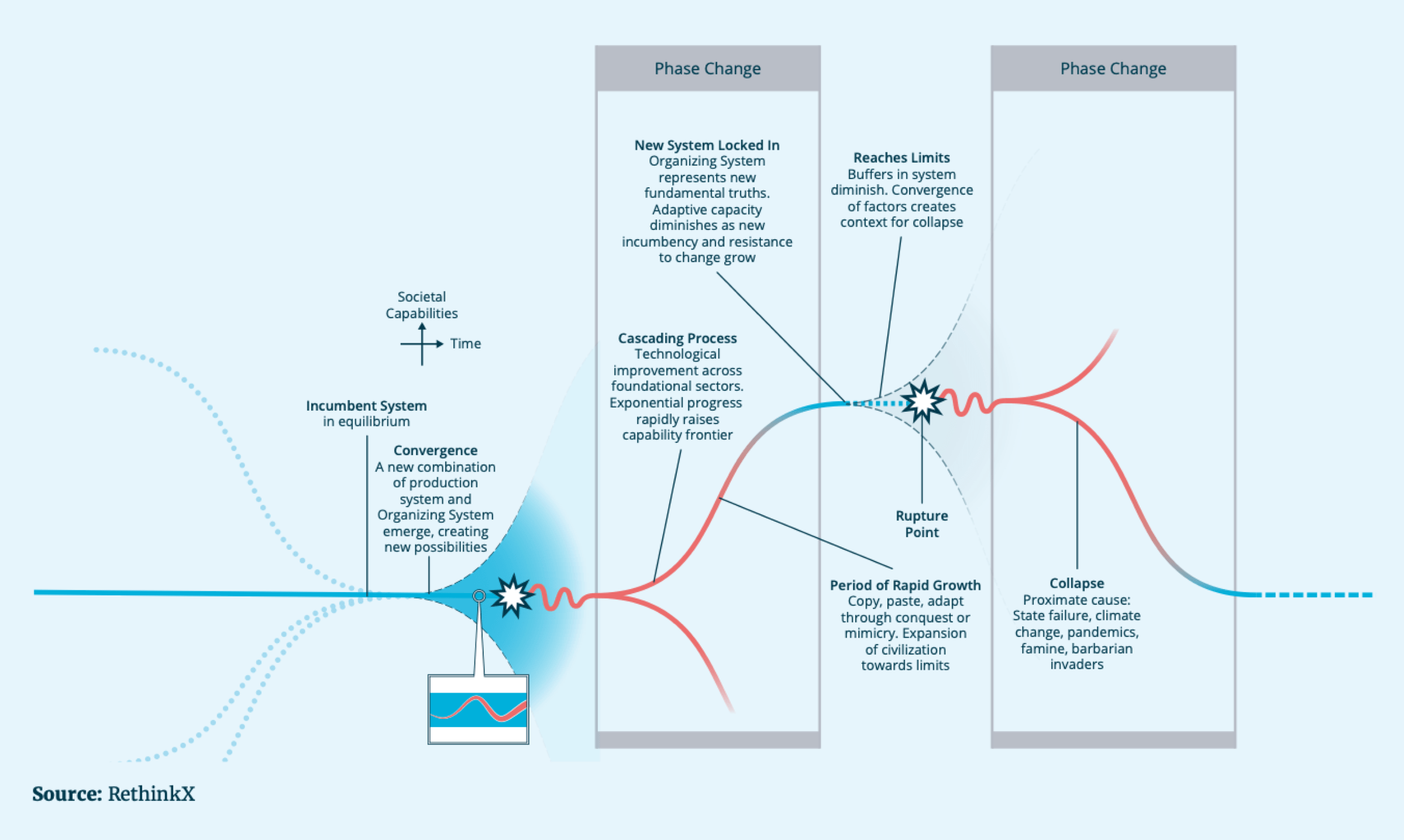
Key features of disruption
Disruptions follow an S-curve
The cost and capabilities of disruptive technologies improve exponentially rather than linearly.
Market adoption of new technology grows along a sigmoidal or S-shaped curve as its cost improves.
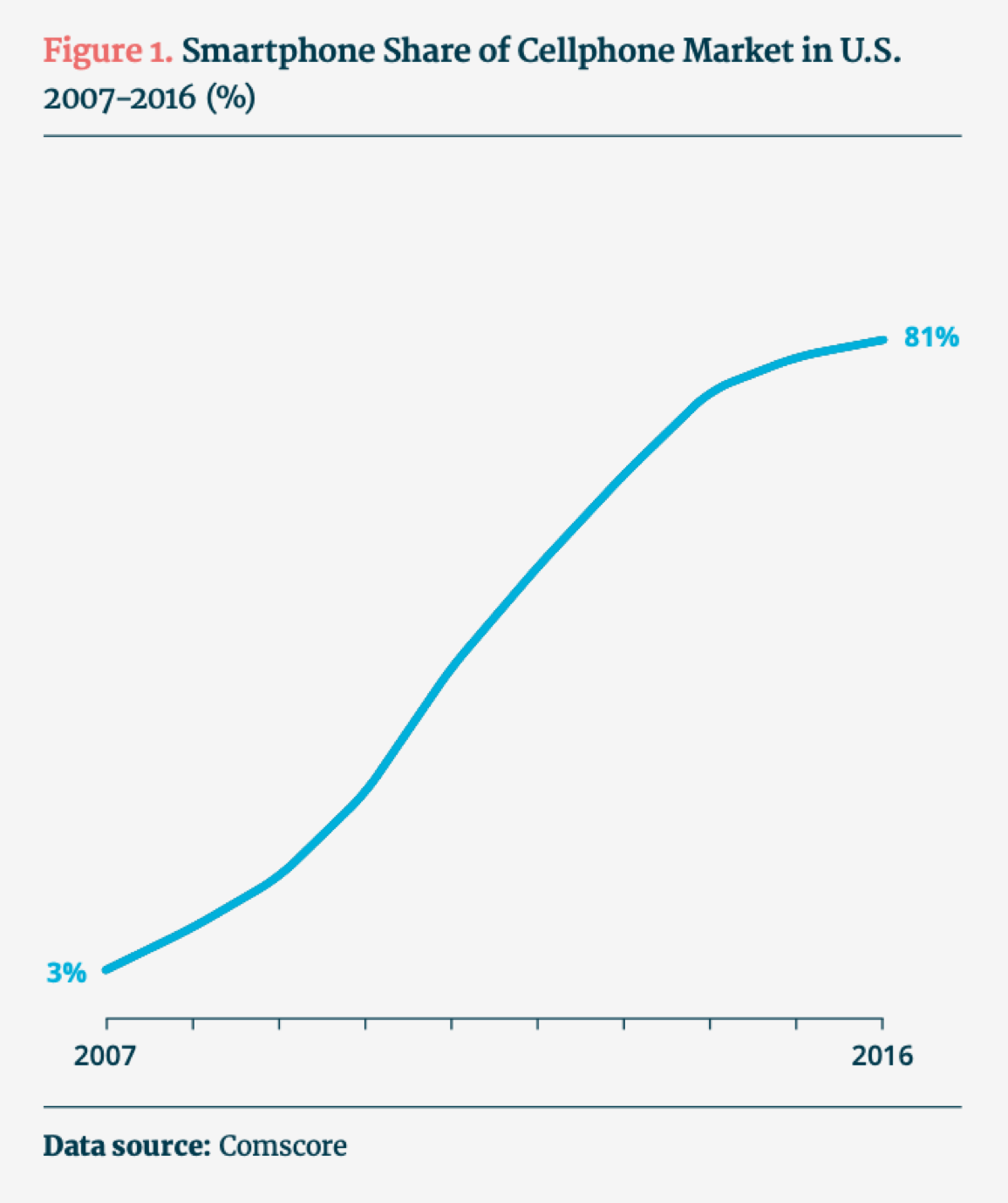
Cost curves are like gravity
By understanding the technology cost curves of the disrupting product, it is possible to predict when the disruption will take place.
Technology cost-improvement curves show the rate at which a given technology improves over time. These improvements are driven by a combination of factors, including increased investments, research and development, manufacturing scale, experience and learning effects, openness, competition, standards, ecosystem integration, application across industries and the size of the market(s).

Disruptions transform our societies
Disruptive products and services are often not like-for-like substitutes. Rather, they transform entire products, services, industries and markets.
The greater value proposition offered by new technologies disrupts any products, services, industries and markets that are wedded to older technologies.

Disruptions are caused by complex systems dynamics
The exponential nature of adoption is driven largely by the effects of interacting systems dynamics, feedback loops, market forces and network effects.
It cannot be assumed that technology costs drop and adoption increases while all else remains equal, as mainstream analyses do.
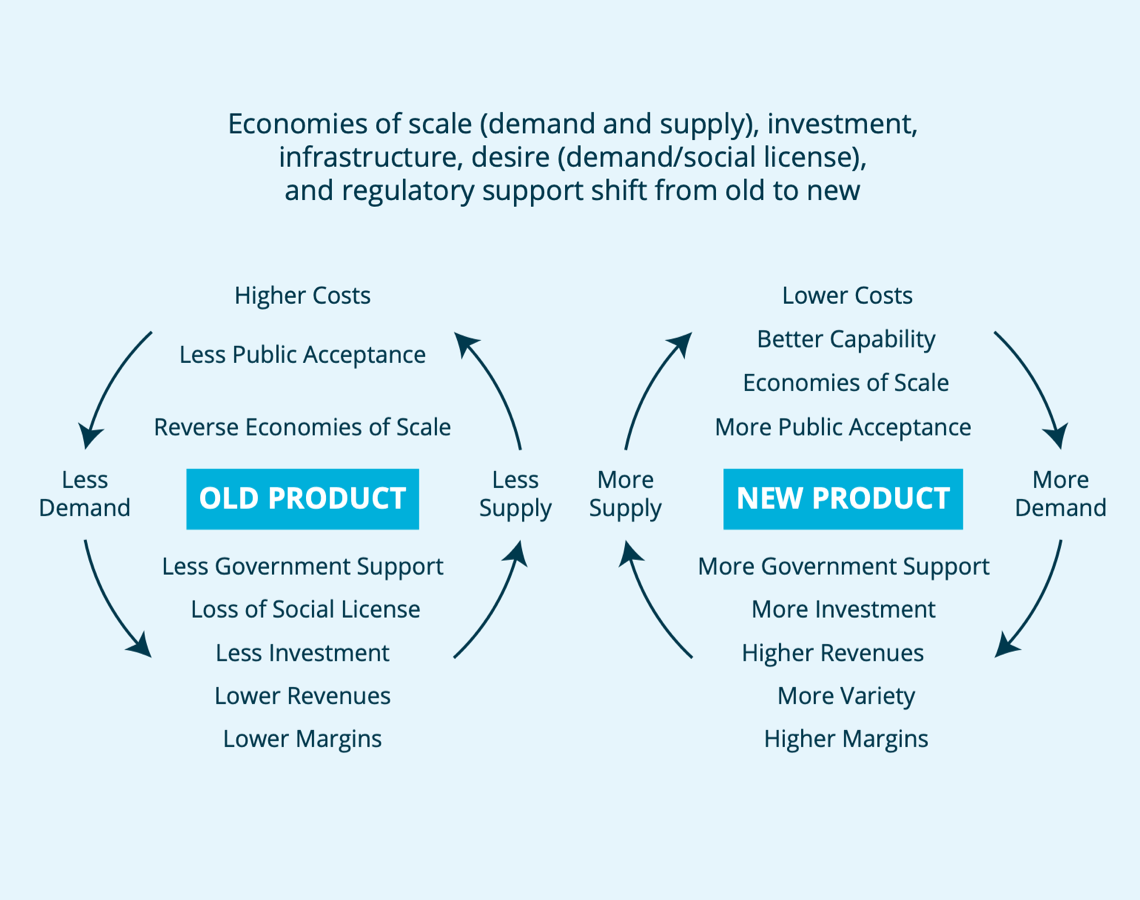
Disruptions have shaped human civilization
The disruption of the horse by automobiles, of film cameras by digital cameras and of landlines by smartphones—along with hundreds of other examples—show that disruptive technologies transform how we live.
Disruptions do not follow a pathway of slow, incremental change, but instead grow exponentially change, but instead grow exponentially because of feedback loops in economic forces.

Disruptions expand existing markets and create new ones
Disruptive technologies expand existing markets and create new ones by supporting novel business models and forms of value creation.
This is why disruptions tend to confound conventional analysts and industry experts whose forecasts and projections misunderstand the speed, scale and transformative dynamics of disruptions.

RethinkX accurately predicts disruptions
RethinkX has been consistently more accurate in forecasting technological change than conventional analysts.
Our team has accurately predicted the dramatic nonlinear cost improvements and market growth of solar, wind and batteries (SWB) in the energy sector, autonomous and electric vehicles (A-EVs) together with Transport-as-a-Service (TaaS) in the transportation sector, and precision fermentation and cellular agriculture (PFCA) in the food sector.
We are witnessing disruptions across our global sectors
In common with other technology-driven disruptions such as digital cameras, mobile phones and microwave ovens, the disruptions of energy, transportation, and food & agriculture, and shifts to SWB & Superpower , Transport-as-a-Service and Food-as-Software will follow the technology-adoption lifecycle — that is, it will be non linear, following an S-curve.
What is The Great Transformation?
We are in the midst of a phase change disruption
This will lead to brand new systems with brand new properties.
The old rules do not apply. Incumbents rarely foresee great change coming. It is RethinkX's role to forecast and guide humanity to the best possible future.

It will transform every aspect of our societies and create a new system
Just as the automobile changed our cities, social lives and economies, the coming disruptions across the foundational sectors of our global economy will be entirely transformational.
Throughout history, advancements in the five foundational sectors have driven the emergence of a new, more capable civilization than any which has come before. But this has only been possible when combined with vastly improved organizational capabilities.
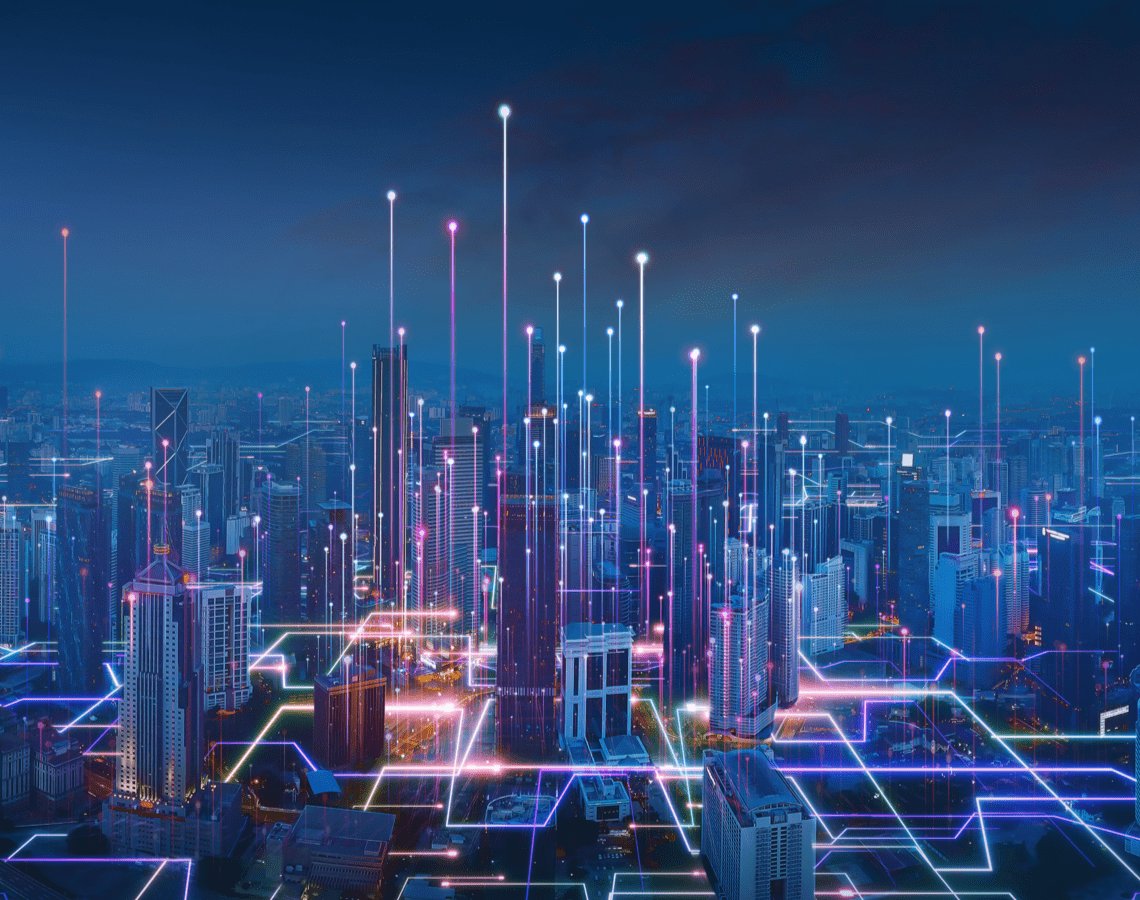
A butterfly is not a caterpillar with wings
A butterfly is not a faster caterpillar. It is a new system. A new life form. If you think you can add wings to a caterpillar to create a butterfly, you will never understand the new system. A caterpillar needs to go through a phase change transformation to become a butterfly, and when it does, it can fly.
- Tony Seba & James Arbib, RethinkX Co-Founders
Disruptions are interconnected, and occurring simultaneously across global sectors
The disruptions unfolding across our energy, food, transportation, information and materials sectors during the 2020s will present new challenges and solve old problems.
By embracing disruption, we have the opportunity to move from a world of extraction to one of creation, a world of scarcity to one of superabundance, a world of inequity and predatory competition to one of shared prosperity and collaboration.

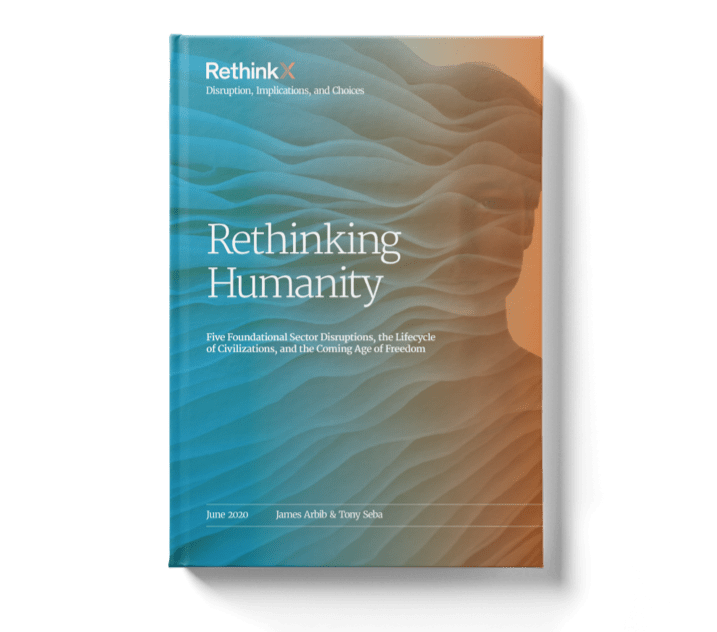
Free Download
Uncover Disruption in more depth
Download our Rethinking Humanity report
















.png?width=732&name=Website%20imagery%20-%20Featured%20Image%201200x628%20(3).png)
-min-2.png?width=732&name=Website%20imagery%20-%20Featured%20Image%201200x628%20(2)-min-2.png)